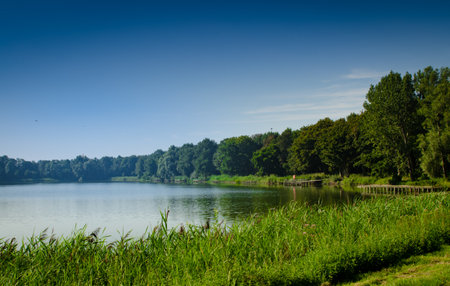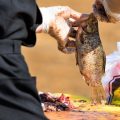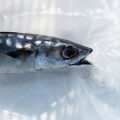1. Understanding Stillwater Ecosystems
When it comes to stillwater fly fishing—especially in lakes, ponds, and other warmwater environments—understanding the ecosystem is just as important as choosing the right fly. Unlike rivers or streams where water is constantly moving, stillwaters offer unique challenges and opportunities due to their stable yet dynamic nature.
Water Temperature
Stillwater temperatures can vary significantly throughout the day and across seasons. Warmwater species like bass, bluegill, and crappie thrive in waters that reach higher temperatures than coldwater species such as trout. Heres a quick look at preferred temperature ranges:
| Species | Optimal Temperature (°F) |
|---|---|
| Largemouth Bass | 65 – 85 |
| Bluegill | 60 – 80 |
| Crappie | 60 – 75 |
| Trout (for comparison) | 50 – 65 |
Oxygen Levels
Unlike fast-moving water, lakes and ponds rely on wind and aquatic plants for oxygenation. During hot summer months, oxygen levels can drop, especially in deeper layers. This affects fish behavior—they often move to shallower or more shaded areas with better oxygen supply. Early morning and late evening are usually the most active times for feeding due to cooler temps and higher oxygen content.
Aquatic Vegetation
Lakes and ponds often feature a variety of aquatic plants like lily pads, cattails, submerged grasses, and algae blooms. These not only provide cover for fish but also serve as habitats for insects and baitfish—the main food sources for many warmwater species. Knowing where vegetation clusters can help you pinpoint where fish are likely to be holding or feeding.
Seasonal Changes
The stillwater environment changes dramatically with the seasons:
| Season | Key Characteristics | Fish Behavior |
|---|---|---|
| Spring | Warming water, spawning activity begins | Active feeding near shallow areas |
| Summer | High temps, potential low oxygen zones | Fish move deeper or to shaded cover during midday |
| Fall | Cooling water, increased oxygen levels | Aggressive feeding before winter sets in |
| Winter (in warm climates) | Milder conditions compared to northern states | Slowed metabolism but still catchable with slow retrieves |
The Takeaway for Fly Fishers
If youre looking to improve your success rate in stillwater fly fishing, start by tuning into the environment. Pay attention to water temperature shifts, locate healthy vegetation zones, and plan your outings around seasonal patterns. The more you understand these factors, the easier itll be to choose the right flies, presentations, and times of day for casting your line.
Tight lines out there!
2. Essential Gear for Stillwater Fly Fishing
When youre fly fishing on stillwaters like lakes and ponds, especially in warmwater environments, your gear setup needs to match the conditions and target species. Whether youre going after bass, bluegill, or trout, having the right rod, reel, line, and flies will make a big difference in your success and enjoyment.
Rods: Picking the Right Weight and Length
Stillwater fly fishing often involves casting longer distances and dealing with wind or larger flies. For warmwater species:
| Target Species | Recommended Rod Weight | Rod Length |
|---|---|---|
| Bluegill & Panfish | 3–5 wt | 86″ – 9 |
| Bass (Largemouth/Smallmouth) | 6–8 wt | 9 |
| Trout (Stillwater) | 5–6 wt | 9–10 |
A longer rod (up to 10 feet) can help with mending line and making longer casts across open water. Bass anglers may want a stiffer rod for turning over bulky poppers or streamers.
Reels: Smooth Drag and Line Capacity Matter
Your reel doesn’t have to be fancy, but it should have a reliable drag system—especially if you’re targeting stronger fish like bass or large trout. Make sure it balances well with your rod and has enough capacity for backing line.
Main Features to Look For:
- Smooth disc drag system for fighting larger fish
- Sufficient backing capacity (at least 50–100 yards)
- CNC-machined aluminum body for durability (optional but ideal)
Lines: Floating, Intermediate, and Sinking Options
Your fly line selection is critical in stillwater settings. Different depths and fish behaviors call for different lines:
| Line Type | Best Use |
|---|---|
| Floating Line | Poppers, dry flies, shallow water up to 3 ft deep |
| Intermediate Line (slow sink) | Nymphs, leeches, searching mid-depths (3–6 ft) |
| Sinking Line (Type III–V) | Baitfish patterns, deeper water (>6 ft), windy days |
A good all-around setup is a floating line paired with an intermediate sink-tip line so you can cover various depths without changing spools constantly.
Flies: Matching Local Food Sources
The best stillwater flies imitate what fish are actually eating in that lake or pond. Here are some proven options by species:
| Species | Effective Fly Patterns |
|---|---|
| Bass | Poppers, Clouser Minnows, Woolly Buggers, Frog imitations |
| Bluegill & Panfish | Damsel nymphs, small poppers, foam spiders, soft hackles |
| Trout | Midge emergers, Chironomids, Scuds, Leech patterns |
Tie or select flies in colors that match local forage—olive, black, white, and chartreuse are usually safe bets.
Tippet and Leader Setup
You’ll want a slightly heavier leader than youd use in rivers due to the possibility of larger fish and the need to turn over bigger flies.
- Bass: 0X–2X tapered leaders (7.5–9)
- Panfish: 4X–5X tapered leaders (7.5)
- Trout: 3X–5X fluorocarbon leaders for low visibility in clear water
A short leader helps control bulky flies on warmwater species; longer leaders aid stealth when targeting spooky trout in clear stillwaters.
![]()
3. Reading the Water: Locating Fish in Stillwater
Finding fish in stillwater environments like lakes and ponds can be tricky, but understanding how to “read the water” can make all the difference. Unlike rivers, where current guides fish behavior, stillwater species rely heavily on structure, cover, and environmental factors. Let’s break down the key areas to target and how conditions like weather and time of day affect fish location.
Key Structures That Attract Fish
Stillwater fish often hold near specific underwater features that provide food, shelter, or ambush points. Here are some of the most productive zones:
| Structure | Description | Why It’s Productive |
|---|---|---|
| Drop-Offs | Steep changes in depth near shorelines or underwater ledges | Offer quick access between shallow feeding grounds and deeper safety zones |
| Weed Beds | Aquatic vegetation areas with submerged plants | Provide oxygen, cover, and food sources like insects and baitfish |
| Inflow/Outflow Areas | Where creeks or springs enter or exit a lake or pond | Create current, bring nutrients, and attract baitfish and predators alike |
| Points and Bays | Shoreline features that jut out (points) or curve inward (bays) | Fish patrol these edges for food; bays warm up faster in spring and attract early activity |
How Weather Impacts Fish Location
Weather has a big influence on where fish hang out in stillwaters. Heres what to consider:
| Condition | Effect on Fish Behavior |
|---|---|
| Sunny Days | Fish may move deeper during midday to avoid bright light; early morning and late evening are best times near shorelines. |
| Cloudy/Overcast Days | Fish feel safer venturing into shallower areas throughout the day; more consistent action. |
| Windy Conditions | Wind-blown shores push surface food into corners—fish follow. Slight chop also reduces visibility and increases feeding confidence. |
The Importance of Time of Day
Dawn and Dusk
This is when many warmwater species like bass, bluegill, and crappie feed actively in the shallows. Cooler temperatures and low light give them an advantage over prey.
Midday Hours
If its hot or sunny, expect fish to move deeper or take cover in weed beds or under submerged structures. Use sinking lines or weighted flies to reach them.
Evening Shifts
The return of low light brings fish back toward the banks. Surface activity increases—perfect for topwater flies like poppers or foam bugs.
Tying It All Together: Strategy Tips
- Sweep with Purpose: Don’t just cast randomly—target drop-offs, weed edges, or inflow zones first.
- Watch the Wind: If it’s blowing from one side of the lake all day, try fishing the windward bank where food gathers.
- Stay Mobile: Move around until you locate active fish instead of waiting for them to find you.
- Match Your Flies: Observe local hatches or baitfish behavior to choose patterns that match what fish are eating.
The more you practice reading the water, the more second-nature it becomes. Over time, you’ll begin to spot those subtle signs—the swirl near a weed line, a slight color change indicating depth—that tell you exactly where to cast your fly.
4. Techniques and Fly Presentation Strategies
When fly fishing in stillwater environments like lakes, ponds, or warmwater reservoirs, how you present your fly can make or break your success. Since theres no moving current to carry your fly naturally, you’ll need to be more intentional with retrieval techniques, depth control, and fly choice. Let’s break down the most effective strategies for these calm water settings.
Fly Retrieval Methods
The way you retrieve your fly is critical in stillwater. Fish are often cruising or suspended rather than holding in a single spot like in rivers. Here are some popular retrieval styles:
| Retrieval Method | Description | Best Used For |
|---|---|---|
| Slow Hand-Twist Retrieve | Gently turning the line with your fingers to create a slow, natural motion. | Nymphs, midges, leeches in cold or pressured waters. |
| Short Strip Retrieve | Quick, short pulls on the line to imitate darting baitfish. | Baitfish patterns, warmwater species like bass or panfish. |
| Long Draw and Pause | A long pull followed by a pause lets the fly flutter and sink naturally. | Damsel nymphs, dragonfly nymphs, streamers. |
Controlling Fly Depth
In stillwater, fish feed at different depths depending on temperature, time of day, and food availability. You can’t always see them, so controlling your fly’s depth is key. Here are three popular ways to do that:
1. Using Strike Indicators
This works great for suspending flies like chironomids or balanced leeches just above the weed beds or thermocline. Adjust the indicator’s position on your leader to change depth easily.
2. Intermediate Lines
These lines sink slowly (usually about 1-2 inches per second), allowing you to keep flies in that mid-depth zone where many fish cruise. Perfect for retrieving streamers or larger nymphs slowly.
3. Slow-Sinking (Type II/III) Lines
If fish are deeper or hugging structure near the bottom, use a slow-sink line to get down there without dragging through weeds too fast. Count-down methods help you determine how deep your fly is sinking before starting your retrieve.
Selecting the Right Fly
Your fly pattern should match both the forage available and the behavior of local fish species. Below is a guide for selecting flies based on conditions:
| Condition | Suggested Flies |
|---|---|
| Early Morning / Low Light | Leech patterns, woolly buggers, poppers (for warmwater species) |
| Midday / Bright Sun | Midge pupa, chironomids under indicators, small nymphs |
| Windy Days / Choppy Surface | Damsel/dragonfly nymphs retrieved with erratic action; foam beetles or hoppers near shorelines |
Bonus Tips for Better Stillwater Success
- Fan Cast: Cover water methodically by casting in a fan pattern around your position before moving spots.
- Watch for Movement: Look for rises, swirls, or cruising fish—these give clues on depth and feeding zones.
- Match Sink Rate with Retrieve: Use slower retrieves with slow-sinking lines; faster retrieves work better with intermediate lines.
- Change Often: If youre not getting hits after 15–20 minutes, change fly patterns or retrieval styles.
Nailing your presentation strategy takes time and observation but makes all the difference when fishing stillwaters. Whether youre targeting trout in alpine lakes or bass in a warmwater pond, keeping these techniques in mind will help you hook more fish and enjoy every cast.
5. Targeting Warmwater Species on the Fly
When it comes to stillwater fly fishing in the U.S., warmwater species like bass, bluegill, crappie, and other panfish are popular targets—especially in lakes and ponds during spring through fall. These fish offer exciting action and are perfect for fly anglers of all skill levels. To be successful, its important to understand their seasonal behavior and use specific tactics tailored to each species.
Bass on the Fly
Largemouth and smallmouth bass are aggressive predators that respond well to both topwater and subsurface flies. During warmer months, early morning and late evening are prime times to use poppers and frog patterns near weed beds or lily pads. In cooler water or deeper zones, switch to streamers or crawfish patterns fished slowly along the bottom.
| Season | Effective Flies | Technique |
|---|---|---|
| Spring (Pre-Spawn) | Clouser Minnow, Woolly Bugger | Slow retrieve near structure |
| Summer | Topwater Poppers, Frog Imitations | Early/late surface action over weeds |
| Fall | Crawfish Patterns, Deceivers | Strip slowly near drop-offs |
Panfish Tactics (Bluegill, Crappie, Sunfish)
Panfish are great fun on light fly tackle. They respond well to small dry flies, nymphs, and soft hackles. In spring, target shallow flats where they spawn. During summer, look for shaded areas under docks or tree branches. Tiny poppers on a 3-weight rod can provide nonstop action on calm evenings.
| Panfish Type | Best Flies | Recommended Setup |
|---|---|---|
| Bluegill | Foam Spider, Griffith’s Gnat | 3-wt rod with floating line |
| Crappie | Minnow Imitations, Bead-head Nymphs | Sinking tip line for suspended schools |
| Sunfish | Damsel Nymphs, Ant Patterns | Sight-fishing with dry flies in clear water |
Other Warmwater Species
You might also encounter species like carp or freshwater drum in stillwaters across the country. These fish can be tricky but rewarding. Carp especially demand stealth and precise casts—use small nymphs or crayfish patterns presented delicately.
Tips for Success Across Species:
- Match the hatch: Observe local insects and baitfish to choose realistic patterns.
- Use the right gear: A 5-6 weight rod offers versatility for most warmwater targets.
- Pay attention to water temps: Fish tend to be more active between 65–80°F.
The key to catching warmwater species on the fly is adapting your approach based on seasonality and habitat. With a little observation and the right fly selection, stillwaters across America can provide thrilling action all year long.
6. Conservation and Ethical Angling Practices
Fly fishing in stillwater environments like lakes, ponds, and warmwater areas is not just about catching fish—its also about taking care of the waters we enjoy. Practicing conservation and ethical angling helps preserve these ecosystems for future generations of anglers and wildlife alike. Here are some important practices to keep in mind while fly fishing in stillwater locations across the U.S.
Catch and Release: Do It Right
Catch and release is one of the most effective ways to protect fish populations, especially in heavily fished or sensitive waters. But doing it improperly can harm or even kill fish. Follow these simple tips to release fish safely:
| Best Practices | Why It Matters |
|---|---|
| Use barbless hooks | Easier removal reduces injury to fish |
| Keep fish wet | Minimizes stress and damage to protective slime coat |
| Handle gently with wet hands | Prevents scale loss and infection |
| Limit air exposure (under 10 seconds) | Improves survival rates after release |
| Revive the fish before letting go | Ensures the fish swims away strong |
Invasive Species Awareness
Lakes and ponds are particularly vulnerable to invasive species that can disrupt native ecosystems. As anglers, we play a key role in preventing their spread.
Clean, Drain, Dry
- Clean: Remove any plants, mud, or debris from your gear, boots, waders, and boat.
- Drain: Empty all water from coolers, live wells, boats, and trailers.
- Dry: Let your equipment dry completely before using it in a different body of water.
This simple routine helps stop the spread of harmful organisms like zebra mussels, Eurasian watermilfoil, and other aquatic invaders.
Respect Public and Private Waters
No matter where youre fishing—whether its a public lake or a privately owned pond—respecting the environment is essential. Always follow posted rules and practice Leave No Trace principles.
- Pack out all trash, including fishing line and tippet clippings.
- Avoid damaging vegetation when walking along shorelines.
- If you bring a watercraft like a float tube or kayak, launch only at designated access points.
Consider Your Ecological Footprint
Your actions on the water have an impact. Here’s how you can minimize your footprint while fly fishing:
| Action | Sustainable Alternative |
|---|---|
| Using lead weights | Switch to non-toxic alternatives like tin or tungsten |
| Packing single-use plastics | Bring reusable containers and bottles |
| Trespassing on private land | Seek permission or stick to public access areas |
The beauty of stillwater fly fishing lies not just in the catch but in the experience. By following these responsible practices, youre helping protect our lakes and ponds so they remain healthy and vibrant for years to come.


